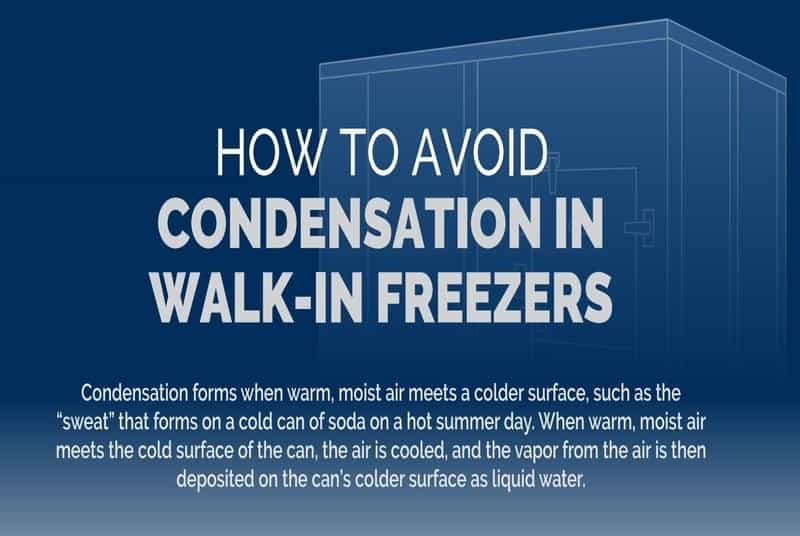
Podcast: Fighting Back Against Condensation in Walk-In Coolers
Condensation in walk-in coolers can be avoided! Owners of walk-in coolers and freezers have seen droplets on glass doors or pooling water on the floor
Condensation & Icing

Condensation in walk-in coolers can be avoided! Owners of walk-in coolers and freezers have seen droplets on glass doors or pooling water on the floor

Ice build up in walk-in freezers is not a good thing. The presence of ice in your walk-in can impact food quality and force your

For companies whose business depends on preserving foods, floral products, scientific research and more, ever-present humidity challenges in cold storage must be managed to ensure

Check out the infographic below to learn how you can avoid condensation in walk-in freezers. Condensation forms when warm, moist air meets a colder surface,

Condensation or frost and ice buildup can damage walk-in coolers and freezers, increasing operating costs and resulting in expensive equipment downtime for maintenance interventions. However,

Just as warmer weather and rising humidity can affect mood and clothing decisions, it can also impact the performance and appearance of walk-in coolers or

As humidity rises, condensation often appears at the frames of walk-in freezers and floors. But why does this happen? Condensation forms when warm, moist air

Anyone who has been to a convenience store or grocery may have seen sweat on the glass doors of walk-in coolers. It’s especially common when

If you have a walk-in freezer that incorporates framing surrounding foam panels, you may have noticed an issue as the humidity rises: ice buildup at

Jason Bratcher, Senior Manager of Project Management at KPS Global talks about symptoms, causes and ways to prevent icing in walk-ins. A few simple steps